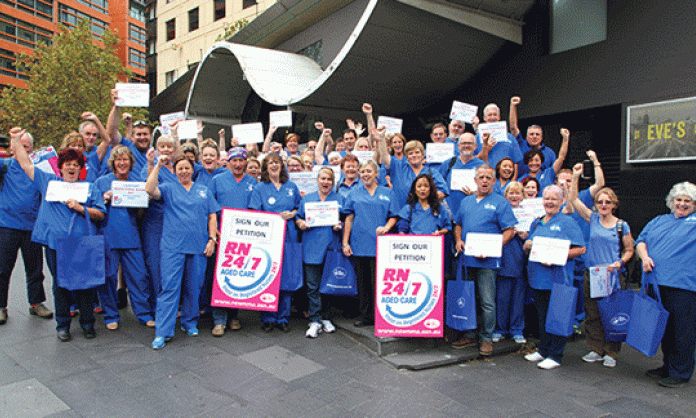Federal government funding changes have abolished the distinction between high care and low care nursing home residents. NSW is currently the only Australian state with legislation requiring that nursing homes with high care residents have a registered nurse (division 1) on site 24 hours a day. Scrapping the demarcation between high and low care residents makes this requirement meaningless.
The Baird state government initially passed interim legislation maintaining the registered nurse requirement in high care nursing homes but is now considering letting the laws lapse.
The nursing home industry is run by some very large companies. Many of these see staffing standards as an unwanted restriction on their business practice. Charles Wurf, CEO of Leading Age Services NSW-ACT, a peak industry body, is for scrapping the registered nurse requirements, saying, “The slow measured retreat from regulating nursing homes in NSW in favour of a national aged care system is both sound and appropriate”.
However, the federal aged care framework says only that staffing levels must be “appropriate”.
Nationally, the best standards for nursing home staffing levels are in Victorian public aged care facilities. These standards are not legislated but have been won and defended by union activity.
A large nurses’ strike in 1986 set the scene for staff to patient ratios to be implemented. In 2000, nurses took further action to get their workload under control. In 2011, nurses again defended ratios with industrial action that was at times illegal under industrial laws. The pressure to lower staffing levels is constant.
The next challenge for the Australian Nurses and Midwifery Federation is to launch a national campaign to win ratios in the rapidly expanding private and not-for-profit aged care sector.










